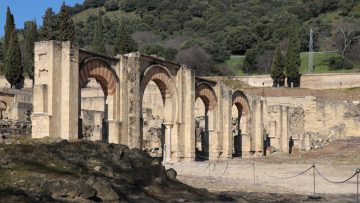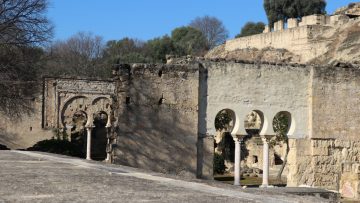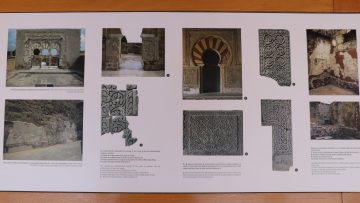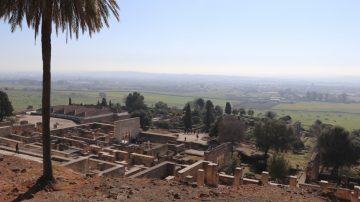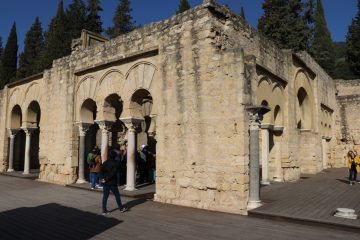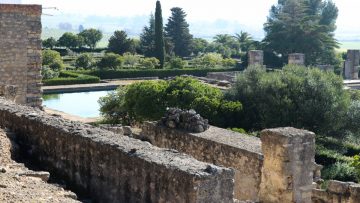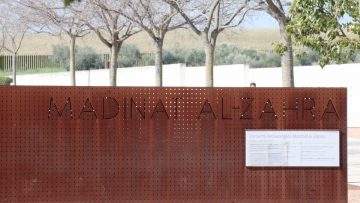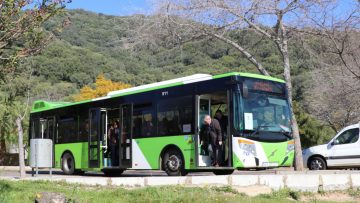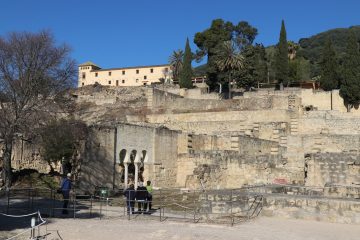The Medina Azahara (Madinat al-Zahra) archaeological site and museum is a top Moorish day-trip destination from Córdoba in Spain.
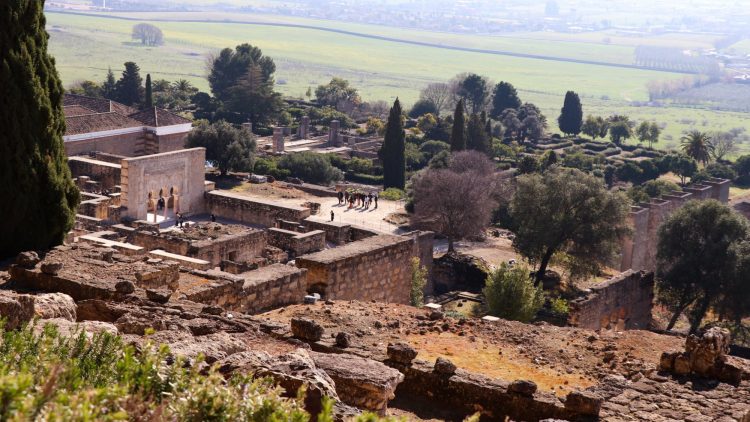
The Mezquita Mosque-Cathedral is by far the best-know Moorish sight in Córdoba but the Medina Azahara archaeological site just outside the city is from the same period and a very popular day-trip destination. This planned mid-tenth century city served as administrative capital and royal residence of the Caliphate of Córdoba. Its splendor lasted only seven decades — it was destroyed in 1010 and abandoned. Only a tenth of the city that once housed 20,000 has been excavated since its rediscovery in 1911. Although it is Spain’s largest archaeological site, it is fairly low key. This UNESCO World Cultural Heritage site is a popular half-day excursion tour destination from nearby Córdoba.
Madinat al-Zahra — The Medieval Shining City near Córdoba
During the 10th century, Córdoba was the most-important city in Western Europe. It had a population over 250,000 and was a political, economical and cultural powerhouse.
Possibly to escape from the chaos of busy Córdoba and to show his importance, the caliph decided to erect — Madinat al-Zahra — a properly planned new administrative capital city around 10 km to the northwest of Córdoba. Construction started around 936 of a city that was enclosed by a 4,500 m long wall. The city was divided into a distinct Alcazar for the caliph and his court and a Medina for the rest of the city that housed up to 20,000 people.
The whole administrative city, but especially the royal palace and reception rooms, was built to impress. Only the finest materials were used. Contemporary records spoke of portals of crystal, waterfall walls and ponds of mercury glistening in the sun.
Madinat al-Zahra (shining or blossoming city) shone for only around 75 years. As the caliphate descended into political division and infighting, Córdoba rapidly lost its importance and dominance with its territory divided into competing smaller political units. Madinat al-Zahara was laid to waste during the civil war that led to the end of Caliphate in 1009-1010. Fundamentalist Berber armies were particularly offended by all the finery and opulence and thoroughly destroyed the city.
The city was abandoned and became a source of building materials. It was only rediscovered around a century ago with purposeful archaeological digging only started in 1911. In 2018, the Caliphate City of Medina Azahara joined the Mezquita and city center of Córdoba as UNESCO World Cultural Heritage sites.
At 112 hectare, Medina Azahara is the largest archaeological site in Spain. However, as it was very thoroughly destroyed and only 10% excavated, it certainly is not as impressive as say Pompeii or the magnificent Alhambra in Granada that was never destroyed. The upside is that it rarely get crowded here although weekends may get busy.
Visiting the Medina Azahara Archaeological Site
There are two distinct areas to see when visiting the archaeological site of Medina Azahara: the visitors’ center with museum and the archaeological site itself.
It is important to call at the visitors center first to pick up tickets — these, even though free for most visitors, are not available at the archaeological site itself. Pick up the useful free brochure with map to get the most of a visit if not taking a guided tour.
Take the shuttle bus (€2.50 return / 3 to 4 times per hour) between the museum and the site — its is otherwise a boring, shadeless half-an-hour walk. Driving (and parking) is not allowed at the upper level).
Madinat al-Zahara Museum and Visitors’ Center
The Madinat al-Zahara Museum and Visitors’ Center with parking area and bus stop is around 2 km from the archaeological site.
The best artifacts and items found at the dig are exhibited in this very modern museum. It gives a very good introduction to the site and the history of the city in four main themes: the foundation of the city, its construction, life in the city and its destruction (and rediscovery).
In addition to the exhibition halls, also stroll past the stores to see through the glass walls the vast collection of items that are still being catalogued or are not currently used for exhibitions.
Medina Azahara Archaeological Site
The entrance to the Medina Azahara archaeological site is from the top giving visitors upon arrival a good overview of the tenth of the original city that has been exposed thus far.
On the upper level were residences and several official buildings, guard houses and stables for the horses.
The most-impressive remains of a private residence are the three horseshoe-shaped arcades of the House of Ya’far that was used by a senior official in the caliphate’s bureaucracy.
The beautiful superior basilica building with five naves was used for civil events — note that only one of the columns retained its original decorations. When visiting without a guide it is often difficult to tell which parts are original and which are reconstruction.
Only four arches remain of the portico that gave access from the town to the civil administration area. Originally this impressive entrance had 15 arches. The nearby mosque, in contrast to the Mezquita in Córdoba, correctly pointed southeast towards Mecca.
Some of the most interesting sights are on the middle terrace level but may be closed for maintenance. These include the gardens with pools and the Abd-al-Rahman II Hall – the artistic highlight of the site with a heavily restored formal reception hall. The Berbers made a thorough job when destroying the palaces but here much of the puzzle from the rubble has been reassembled.
Medina Azahara Visitors’ Information
The Medina Azahara museum and archaeological site are open as follows:
- Sunday — 9:00 to 15:00 (year round)
- Tuesday to Saturday — 9:00 closing at 15:00 (July to mid-September), at 18:00 (mid-September to end March), and at 21:00 (April to June).
Night time visits are possible mostly during the June to September period.
Admission is free to EU nationals, or €1.50 for other visitors. Tickets, also for EU nationals, must be picked up at the museum before proceeding to the archaeological site.
Tickets for the shuttle bus (pay the driver) are €2.50 return or €1.50 for children 5 to 12 and seniors (65 plus).
Most visitors spend two to three hours at Medina Azahara, including visiting the museum and archaeological site.
The museum has a small cafe but only a vending machine is currently available at the archaeological site — taking own water and a picnic are sensible.
Transportation to Medina Azahara near Córdoba
Medina Azahara is a popular half-day trip destination from Córdoba. It can easily be reached by car, on guided tours, or by shuttle bus from downtown Córdoba.
Driving from Córdoba is easy. Simply follow the main road (A431) towards Palma del Rio. The turn off to the right is well marked with the parking area and museum less than a kilometer off the main road. Parking is currently free.
The sight may also be reached on public transportation from Córdoba. Reservations for the Bus Diario a Medina Azahara are essential — online or from tourist offices. Tickets are not sold on the bus. The return fare is €9 (€5 for children) and includes the shuttle bus fare from the museum to the archaeological site. In Córdoba, the bus departs from Paseo de la Victoria (Glorieta Hospital Cruz Roja) and Paseo de la Victoria (in front of the Mausoleo Romano) — traveling time is around 20 minutes. This service provides only transportation — it is not a guided tour.
Traditional guided tours are also available and has the advantage of all transportation usually being included but do read the fine print. English tours are generally less frequent than in Spanish. Tours are often available that include the Bus Diario from Córdoba (small discount) or to start at the parking area shortly after the bus from Córdoba arrives. Prices are fairly similar although some may be swayed by tours that include of a beer and tapa.

